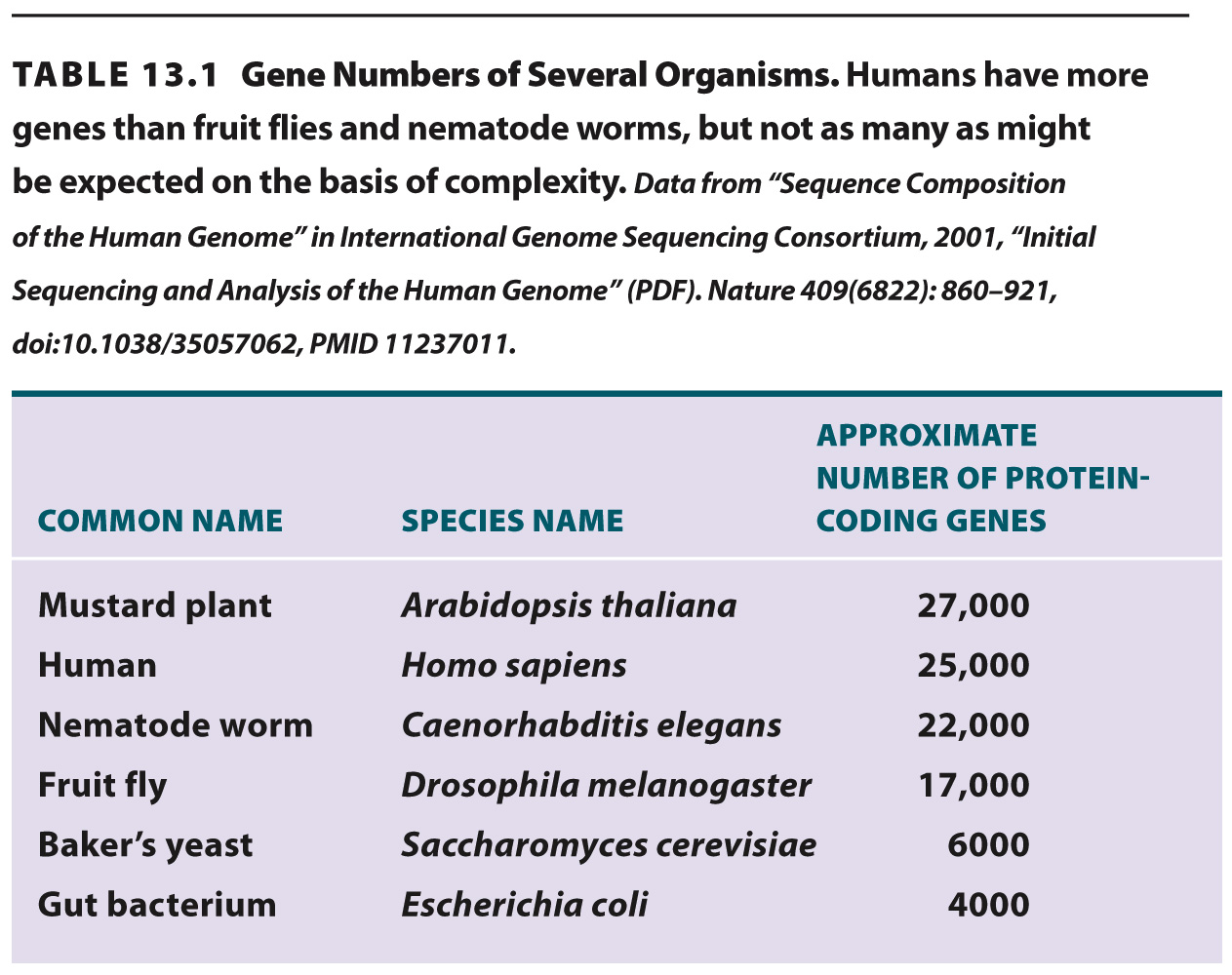Gene number is not a good predictor of biological complexity.
The complete genome sequences of many organisms allow us to make comparisons among them (Table 13.1). As different genomes were sequenced and annotated, it came as something of a surprise to find that humans have about the same number of protein-coding genes as many organisms with much smaller genomes. For example, the small flowering plant Arabidopsis thaliana has a genome only about 5% as large as that of humans, but the plant has at least as many protein-coding genes. And the nematode worm Caenorhabditis elegans contains only 959 cells, of which 302 are nerve cells that form the worm’s brain. Humans have 100 trillion cells, of which 100 billion are nerve cells. Despite having 100 million times as many cells as the worm, we have roughly the same number of protein-coding genes. Another example of the disconnect between level of complexity and genome size is the observation that the genome size of the mountain grasshopper Podisma pedestris is more than 100 times that of the fruit fly Drosophila melanogaster. While there is no agreed-upon definition of organismal complexity, it would be hard to make a case that grasshoppers are any more or less complex than fruit flies.

On the other hand, some organisms are able to do more things with the genes they have than other organisms. For example, the expression of protein-coding genes can be regulated in many subtle ways, causing different gene products to be made in different amounts in different cells at different times (Chapters 19 and 20). Differential gene expression allows the same protein-coding genes to be deployed in different combinations to yield a variety of distinct cell types. In addition, proteins can interact with one another so that, even though there are relatively few types of protein, they are capable of combining in many different ways to perform different functions. We also have seen that a single gene may yield multiple proteins, either because of alternative splicing (different exons are spliced together to make different proteins) or posttranslational modification (proteins undergo biochemical changes after they have been translated).
Page 279
Overall, the data in Table 13.1 pose many tantalizing evolutionary questions and suggest that major evolutionary changes can be accomplished not only by the acquisition of whole new genes, but also by modifying existing genes and their regulation in subtle ways.
